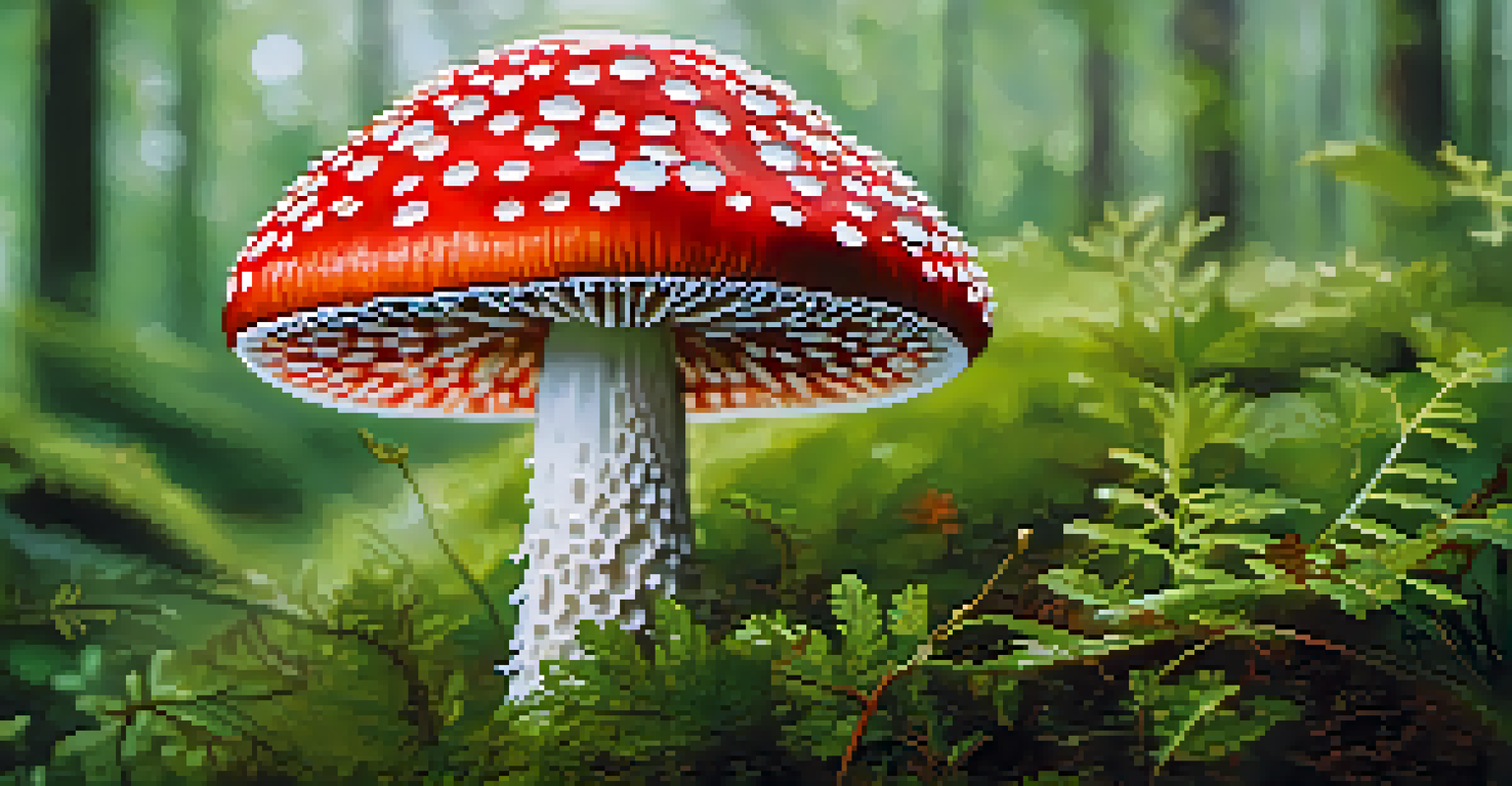Entheogens in Ancient Rome: Mysteries and Religious Practices

Introduction to Entheogens in Roman Culture
Entheogens, substances that inspire spiritual experiences, played a fascinating role in ancient Roman culture. These sacred plants and compounds were often used in religious rituals to connect with the divine. Romans believed that these substances could facilitate communication with gods, offering insights and guidance that were otherwise hidden from human understanding.
Psychedelics are a tool for spiritual growth and transformation, helping us to connect with deeper aspects of ourselves and the universe.
The use of entheogens was not merely for recreational purposes; they were deeply intertwined with spiritual practices. For example, certain plants were associated with specific deities, enhancing the worship experience. By consuming these substances, Romans sought to elevate their consciousness and deepen their connection to the cosmos.
As we delve deeper into the mysteries of entheogens, it's essential to understand their historical significance. The connection between nature and spirituality was paramount, as these substances were viewed as gifts from the gods, bridging the gap between the earthly and the divine.
Key Entheogenic Substances in Ancient Rome
Several substances were prominent in Roman religious practices, including the opium poppy and various mushrooms. Opium, derived from the poppy plant, was known for its psychoactive effects and was often used in rituals to induce altered states of consciousness. This allowed participants to experience a sense of euphoria and transcendence during sacred ceremonies.

Another notable entheogen was the fly agaric mushroom, which had a long-standing history in various cultures. In Roman times, it was believed to provide visions and insights into the spiritual realm. The use of such mushrooms highlights the Romans' complex understanding of plant-based substances and their potential for spiritual elevation.
Entheogens in Roman Spirituality
Entheogens were crucial in ancient Roman rituals, believed to facilitate communication with the divine and elevate consciousness.
These substances were not just randomly consumed; they were often prepared and administered by priests or shamans who understood their properties and effects. This careful orchestration ensured that the participants could safely navigate their mystical journeys.
Rituals Involving Entheogens
Rituals often centered around the consumption of entheogens, which were integral to Roman religious practices. These ceremonies typically took place in sacred spaces, such as temples or groves, where the atmosphere was charged with spiritual significance. Participants would gather to partake in these rituals, seeking communion with the divine.
Entheogens can guide us on a journey of self-discovery and connection to the cosmos, revealing the mysteries of existence.
During these gatherings, specific chants, dances, and offerings were made to honor the gods. The consumption of entheogens often coincided with these activities, creating a multi-sensory experience that heightened spiritual awareness. This interplay between ritual and substance use exemplified the Romans' commitment to their faith.
Through these rituals, not only did Romans seek personal enlightenment, but they also fostered a sense of community. Sharing these experiences helped to strengthen social bonds and solidify collective beliefs, reinforcing the role of entheogens in both personal and communal spiritual practices.
The Role of Priests and Priestesses
In ancient Rome, priests and priestesses played vital roles in managing the use of entheogens during rituals. These individuals were seen as intermediaries between the divine and the mortal. They were responsible for preparing the substances, ensuring that they were used safely and effectively to facilitate spiritual experiences.
Priests underwent extensive training to understand the properties of various entheogens, both for their psychoactive effects and their symbolic meanings. This expertise allowed them to tailor rituals to the needs of the community, ensuring that the experiences were both profound and meaningful.
Priests' Role in Rituals
Priests and priestesses in Rome were essential for the safe and effective use of entheogens, guiding spiritual experiences for the community.
Moreover, the authority of these religious figures lent legitimacy to the use of entheogens. Their guidance helped believers navigate the complexities of their spiritual journeys, reinforcing the idea that these substances were sacred tools for divine connection.
Cultural Significance of Entheogens
The cultural significance of entheogens in ancient Rome extended beyond religious practices; they were deeply woven into the fabric of Roman society. These substances were often associated with various festivals, celebrations, and rites of passage, marking important life events. The communal use of entheogens during these occasions fostered a sense of unity and shared purpose.
Additionally, entheogens were used to symbolize the cyclical nature of life, death, and rebirth. Many Romans believed that by consuming these substances, they could gain insights into the afterlife and the divine order of existence. This belief further embedded entheogens into the cultural narrative, highlighting their importance in understanding the human experience.
As such, entheogens were not just tools for personal enlightenment; they served as a reflection of the broader Roman worldview, emphasizing a deep connection between humanity, nature, and the divine.
Decline of Entheogenic Practices
Despite their prominence in ancient Roman culture, the use of entheogens began to decline with the rise of Christianity. As the new faith spread, many traditional practices, including those involving entheogens, were deemed pagan and were actively discouraged. This shift marked a significant turning point in how spirituality was perceived and practiced in Roman society.
The decline of entheogenic practices also coincided with a broader cultural shift toward rationalism and a focus on orthodoxy. As the emphasis on personal mystical experiences waned, the collective rituals that celebrated entheogens were gradually replaced by more structured forms of worship.
Decline with Rise of Christianity
The rise of Christianity led to the decline of entheogenic practices in Rome, marking a significant cultural shift in spirituality.
This transition not only altered the spiritual landscape of Rome but also led to the loss of ancient knowledge regarding entheogens and their uses. The rich tapestry of Roman spirituality, woven with the threads of entheogenic experiences, began to unravel, leaving behind only whispers of its once-vibrant presence.
Legacy of Entheogens in Modern Spirituality
Today, the legacy of entheogens continues to resonate within modern spiritual practices. Many contemporary seekers are revisiting these ancient traditions, recognizing the potential for entheogens to facilitate profound spiritual experiences. This revival reflects a growing interest in the intersection of spirituality and psychedelics, as individuals seek to explore consciousness and connection.
Moreover, modern research into the therapeutic benefits of entheogens has sparked a renewed interest in their historical uses. As scientists and practitioners delve into the healing properties of these substances, there is a growing acknowledgment of their role in fostering personal growth and spiritual enlightenment.

As we look back at the practices of ancient Rome, we find a rich history that informs our understanding of entheogens today. This journey through time highlights not only the enduring significance of these substances but also their potential to transform our spiritual landscape once more.